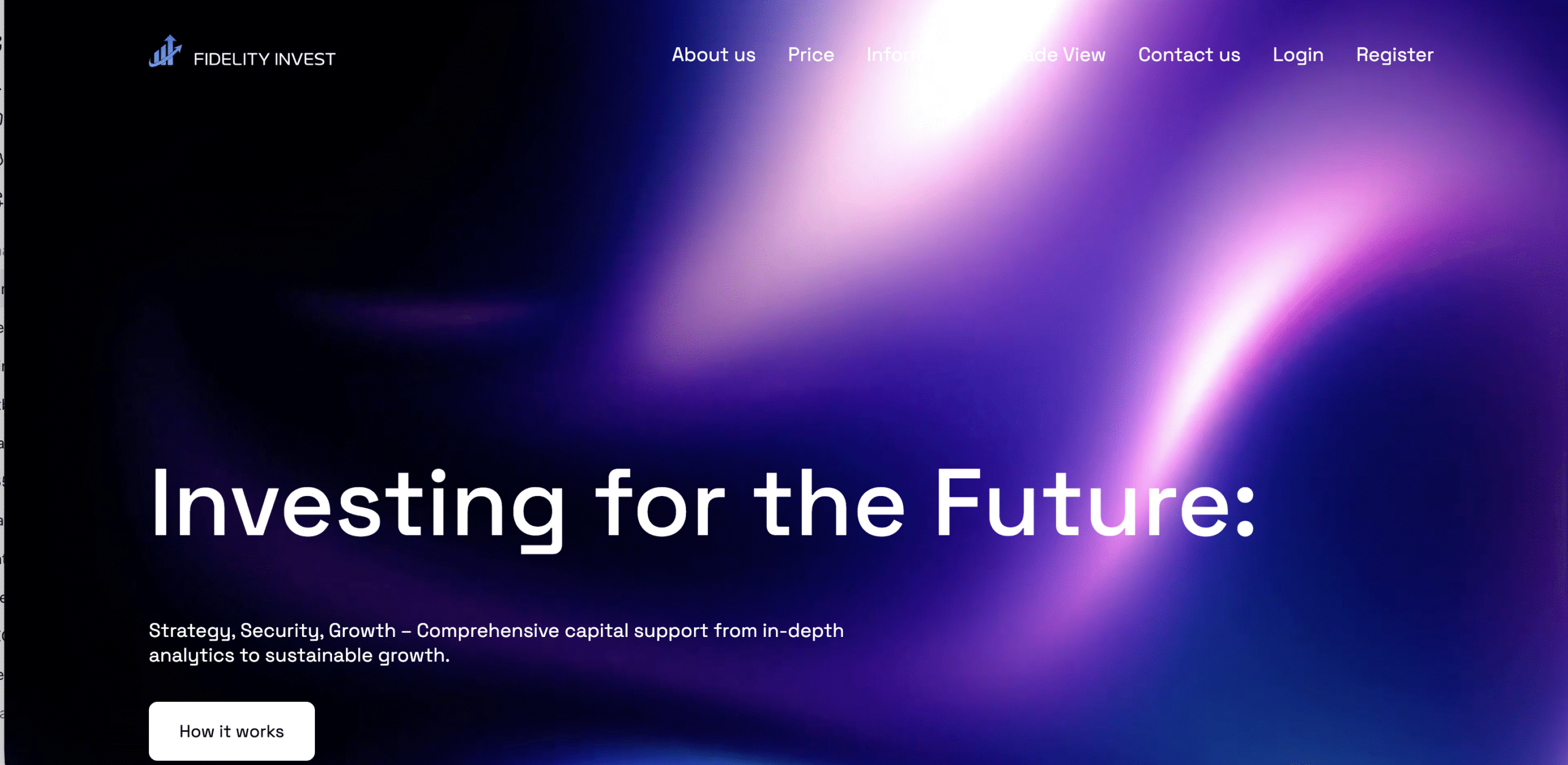Introduction
The digital investment landscape has exploded over the last few years, and with it, a rising wave of fraudulent platforms hiding behind flashy branding and fake innovation. One of the most notorious examples of this trend is Meta Assets — a name that has appeared across social media, online ads, and private messages promising enormous profits through crypto and forex trading.
At first glance, Meta Assets appears professional and legitimate. Its website boasts sophisticated dashboards, trading bots, and managed portfolios with consistent profits. But behind the glossy surface lies a well-orchestrated scam designed to lure unsuspecting investors, extract deposits, and vanish when it’s time to pay out.
This in-depth review dissects how the Meta Assets scam operates, how it manipulates victims, and what warning signs expose it for what it truly is — a fraudulent scheme dressed in the language of modern finance.
1. What is “Meta Assets”?
Meta Assets presents itself as a next-generation trading and asset management platform offering cryptocurrency and forex trading with “AI-powered algorithms” and “professional management.” It claims to provide users with access to secure trading strategies, automated bots, and guaranteed returns that far exceed market averages.
However, beyond its sleek website and polished presentation, Meta Assets provides no verifiable company information. There are no legitimate business registrations, regulatory licenses, or transparent corporate structures. The brand name has appeared across multiple domain names and sub-brands — such as MetaAssets FX, Meta Assets World, and Metassets — each one operating for a short time before disappearing or redirecting to another mirror site.
This pattern of domain-hopping and rebranding is a classic hallmark of online investment fraud. Scammers use it to evade detection, reset their reputation, and keep attracting new victims.
2. How the Scam Works
The Meta Assets scam follows a familiar and deliberate structure. Its operation can be divided into several stages, each crafted to manipulate emotions, build false trust, and maximize financial extraction.
a) The Hook
The first point of contact usually comes through social media ads, private messages, or investment groups. The ads are polished and convincing — they might show fake celebrity endorsements, charts of skyrocketing profits, or testimonials from “investors” who allegedly made thousands in weeks.
Many victims report receiving personal outreach from fake financial advisors or attractive online personalities who claim to have insider access to Meta Assets. They promise an easy, passive income opportunity with “guaranteed” daily returns.
b) The Onboarding Phase
Once a victim shows interest, they’re directed to the Meta Assets website or app. The registration process is quick and frictionless — just an email and a small deposit. The interface looks sleek, featuring live price charts, account balances, and portfolio growth indicators.
The system is designed to make the user feel like they’re participating in real financial trading. In reality, all of these numbers are fabricated simulations meant to display continuous profit, creating the illusion of success and trustworthiness.
c) The Deposit and Growth Illusion
After registration, users are urged to make their first “investment.” The minimum entry amount is often small — $100 to $250 — making it psychologically easier to commit. Within days, the account shows impressive returns, sometimes 20–30% gains. This apparent success convinces many to invest larger amounts.
The scammers often assign a personal account manager or “advisor” who acts friendly and supportive. Their real job is to pressure the victim to deposit more by promising access to higher-yield plans, VIP trading bots, or exclusive bonuses.
d) The Payout Trap
When an investor eventually attempts to withdraw profits, things change. Suddenly, withdrawals are delayed, blocked, or “temporarily disabled due to maintenance.” The fake account manager starts giving excuses: additional fees are required, taxes must be paid in advance, or the account must reach a minimum threshold before withdrawal is possible.
Some victims may even receive a small withdrawal at first to build trust — a calculated move to make larger deposits seem safe. Once larger amounts are deposited, the withdrawal requests are completely ignored or rejected. Eventually, the entire platform or website may disappear.
3. Red Flags that Expose Meta Assets as a Scam
The Meta Assets operation is not subtle. To a trained eye, its red flags are numerous and consistent with known patterns of online financial fraud.
1. No Regulatory Oversight
Meta Assets claims to offer investment and trading services, yet provides no license numbers, regulatory bodies, or verifiable business registration. Any legitimate financial or crypto trading platform must clearly display its licensing credentials — Meta Assets does not.
2. Unrealistic Returns
The platform advertises guaranteed daily or weekly profits of 5% to 10%, which is mathematically impossible and financially unsustainable. Such promises are a universal hallmark of scams designed to attract naive investors.
3. Anonymous Ownership
There is no real company address, no directors, and no team members linked to any official corporate record. Contact information, if present at all, leads to generic email addresses or fake office locations.
4. Multiple Clone Websites
The operation constantly shifts between domain names, changing its web design and branding slightly to appear new. Each iteration runs the same script — collect deposits, block withdrawals, vanish, and reappear under a new name.
5. Fabricated Testimonials
Many of the testimonials on Meta Assets websites or ads use stock photos, stolen LinkedIn profiles, or AI-generated headshots. None of these “investors” exist in real life.
6. Fake Trading Data
The account dashboards that show profits are simulated. The so-called live trading results are merely pre-programmed animations and random data — no real trading occurs behind the scenes.
7. High-Pressure Sales Tactics
Victims often describe relentless calls or messages from “account managers” pushing them to invest quickly before “exclusive offers” expire. Pressure and urgency are classic manipulation tools.
4. The Psychology Behind the Scam
Meta Assets doesn’t just rely on fake data — it relies on emotional manipulation. Understanding this psychology helps explain why so many intelligent people still fall victim.
a) The Illusion of Credibility
Scammers know presentation is everything. A clean website, professional charts, and jargon like “blockchain AI” or “quantitative trading” make the scheme sound legitimate. Victims assume that something that looks sophisticated must be authentic.
b) The Fear of Missing Out
The promise of fast, easy profits preys on people’s fear of being left behind in the “crypto boom.” By showing fake testimonials of people doubling their money, the scam pushes impulsive decisions.
c) The Trust Building Phase
Scammers play the long game. Friendly account managers chat casually, build rapport, and pretend to care about your financial growth. Once they’ve established trust, victims are far more likely to send large deposits without question.
d) The Shame Factor
After realizing they’ve been scammed, many victims feel embarrassed or ashamed, believing they should have “known better.” This emotional barrier often prevents people from speaking up, allowing the scammers to continue operating unnoticed.
5. Patterns Common to Meta Assets and Similar Scams
Meta Assets is not an isolated case. It’s part of a larger ecosystem of pseudo-investment scams that recycle the same methods under different names. Here’s how they typically evolve:
-
Launch under a new domain with convincing visuals and buzzwords like “AI,” “DeFi,” or “metaverse trading.”
-
Run social media campaigns with fake celebrity endorsements or influencers promoting the service.
-
Use high-yield promises (e.g., “Earn 3% daily guaranteed” or “Double your investment in 10 days”).
-
Hire or impersonate support agents who contact potential investors directly.
-
Collect deposits, simulate profits, block withdrawals, and disappear.
-
Rebrand under a new name within months.
Meta Assets fits this mold perfectly, recycling elements from other collapsed scams. The structure and language of its marketing materials are almost identical to dozens of other fraudulent trading platforms.
6. The Broader Problem: Social Media-Enabled Fraud
One reason scams like Meta Assets spread so widely is their ability to exploit social media ecosystems.
Platforms like Facebook, Instagram, and TikTok allow advertisers to target users by interest — for example, those who follow crypto, investing, or personal finance pages. Scammers then deploy fake ads with limited-time offers, professional branding, and emotionally charged messaging.
Social media’s viral nature amplifies the scam’s reach. Victims often unknowingly share the ads or recommend them to friends before realizing they’ve been duped. The combination of algorithmic targeting, visual persuasion, and peer sharing makes these scams incredibly efficient.
7. How Victims Describe Their Experience
Reading through victim testimonies reveals a remarkably consistent narrative:
-
Initial contact through social media or direct message.
-
A small “test deposit” that seemed to grow rapidly.
-
Continuous encouragement from a persuasive account manager.
-
Requests for more money to unlock bonuses or higher-level trading bots.
-
Rejection or delay of withdrawal requests, followed by silence.
-
The website or contact channels suddenly disappearing.
Some victims report losing hundreds; others, tens of thousands. What unites their stories is the same sequence of manipulation, deception, and vanishing support.
8. Why Meta Assets Survives — The Mechanics of a Disappearing Scam
Even after countless reports and warnings, Meta Assets and its clones keep resurfacing. Here’s why:
-
Anonymous Domains: Scammers register websites under privacy-shielded services that hide ownership details.
-
Offshore Servers: Hosting in countries with limited enforcement allows them to evade shutdown orders.
-
Cryptocurrency Payments: Because payments are made in crypto, there’s no chargeback path or easy traceability.
-
Ever-Changing Names: By slightly altering the brand name (e.g., MetaAssetPro, MetaAssetsFX), they sidestep blacklists and rebuild quickly.
-
Social Media Recycling: Once an account or ad is banned, they simply create a new one with identical content.
This adaptability makes it nearly impossible to eradicate the scam completely — at least until victims stop feeding it with deposits.
9. Lessons from the Meta Assets Case
The Meta Assets story is part of a much larger pattern of online financial exploitation. Several important lessons emerge from examining it closely:
Lesson 1: Professional Design ≠ Legitimacy
A clean interface, responsive website, and live charts mean nothing. Scammers invest heavily in design because it’s the easiest way to appear credible.
Lesson 2: Regulation Is the Only Real Proof
If a company handles investments, it must be regulated by a financial authority. Anything less should be considered unsafe by default.
Lesson 3: Profits Should Never Be “Guaranteed”
Markets fluctuate. Anyone promising consistent high returns is lying — even professional hedge funds can’t make such claims.
Lesson 4: Communication Style Reveals Intent
Legitimate financial advisors don’t pressure clients to deposit money immediately. High-pressure sales tactics are a dead giveaway.
Lesson 5: Transparency Is Non-Negotiable
A real investment firm can provide its registration number, physical address, and executive names without hesitation. The absence of these details means you’re dealing with a ghost.
Report Meta Assets scam and Recover Your Funds
If you have lost money to Meta Assets , it’s important to take action immediately. Report the scam to LOSTFUNDSRECOBERY.COM, a trusted platform that assists victims in recovering their stolen funds. The sooner you act, the better your chances of reclaiming your money and holding these fraudsters accountable.
Scam brokers like Meta Assets continue to target unsuspecting investors. Stay informed, avoid unregulated platforms, and report scams to protect yourself and others from financial fraud.



